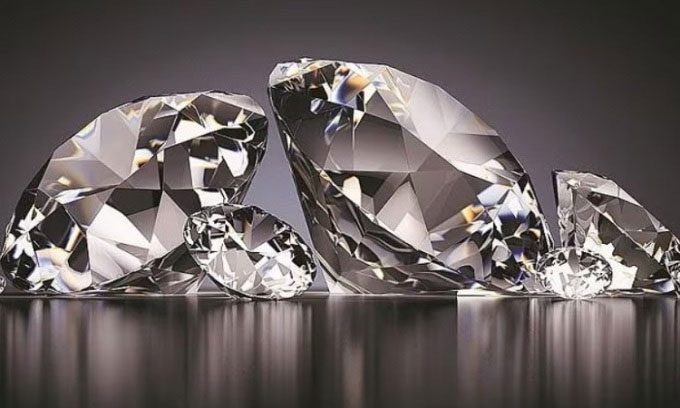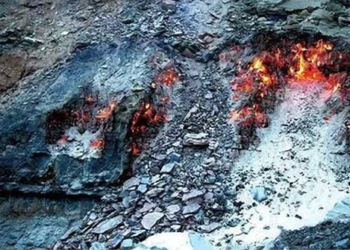Some materials like lonsdaleite can be harder than diamond, but they do not exist in large quantities or are not widely usable.
Diamonds are highly valued for their hardness. As jewelry, they can last for generations and resist scratching despite daily wear. For making blades or drill bits, they can cut through almost anything without being damaged. In powdered form, diamonds help polish gemstones, metals, and many other materials. Therefore, discovering a material harder than diamond is quite challenging, according to Live Science.
According to Richard Kaner, a materials chemist at the University of California, diamond remains the hardest material for most practical purposes. There are various methods to create diamonds that are harder than standard diamonds, and theoretically, other materials may be harder than diamonds, but they do not exist in a form that can be held or widely used.

Diamonds can scratch nearly everything. (Image: Business Standard).
While people wearing diamond jewelry can attest to its durability, the concept of “hardness against indentation” is quite specialized, according to Paul Asimow, a geochemist at the California Institute of Technology (Caltech). It is often confused with other characteristics such as flexural strength or toughness. These factors do not always align with hardness against indentation. For instance, diamonds have a very high hardness against indentation but only a medium flexural strength. Diamonds can easily fracture along their crystal faces, which is how jewelers can create beautifully faceted diamonds.
Scientists measure hardness against indentation in several ways. Geologists often rely on the comparative unit known as the Mohs hardness scale, a method for identifying field minerals based on whether they can scratch one another. Diamonds rank at 10, the highest level on the Mohs scale, meaning they can scratch almost anything. In laboratories, materials scientists use a more precise measurement method called the Vickers hardness test, which determines a material’s hardness based on the force required to produce an indentation, similar to pressing a pencil tip into an eraser.
Diamonds are composed of carbon atoms arranged in a cubic lattice, bonded together by strong and short chemical bonds. This structure gives them their characteristic hardness against indentation. Most materials that are harder than diamonds result from slight modifications to the crystal structure of standard diamonds or by substituting some carbon atoms with boron or nitrogen.
A contender for the title of hardest material is lonsdaleite. Similar to diamonds, lonsdaleite is made of carbon atoms, but they are arranged in a hexagonal crystal structure instead of cubic. Until recently, lonsdaleite was found in extremely small quantities, primarily within meteorites, and researchers are still uncertain whether it should be classified as a distinct material or merely a defect within the crystal structure of standard diamonds.
Recently, a group of scientists discovered micron-sized lonsdaleite crystals (one micron equals 1/1,000 mm) in meteorites. These are tiny crystals, but still larger than previous findings. Other scientists have reported creating lonsdaleite in the lab, although these crystals only last for a fraction of a second. Therefore, while lonsdaleite is intriguing, it cannot replace diamonds in applications such as cutting, drilling, or polishing in the near future.
Modifying the nanostructure of diamonds could also lead to materials that are harder than conventional diamonds. A material made from many tiny diamond crystals can be harder than diamonds used as gemstones because the nanoscale grains are fixed in place rather than sliding past one another. “Nano-diamond pairs,” where the particles form mirror-like shapes of one another, exhibit indentation hardness double that of regular diamonds.
However, most scientists are not pursuing ultra-hard materials merely to set records; instead, they aim to create something useful. They may wish to develop materials that are nearly as hard as diamonds but cheaper or easier to produce in a laboratory.
For instance, Kaner’s lab has produced several ultra-hard metals that can be used in industrial applications instead of diamonds. A commercially available product combines tungsten and boron, along with very small amounts of other metals. The shape of the crystal gives the material different characteristics in various directions. When aligned in the right direction, it can scratch diamonds, according to Kaner. This material is also cost-effective to produce because it does not require the high-pressure conditions needed to create diamonds in the laboratory.





















































